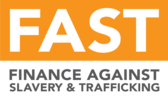The Vulnerable Populations Initiative is a a collaboration of financial institutions, survivor service provider organizations and other relevant entities and aims to promote financial access and services for populations vulnerable to modern slavery.
It provides a framework for the provision of microfinance and digital finance products and services tailored to strengthen financial access for populations that have heightened vulnerability to modern slavery and human trafficking. It includes (but it not limited to) displaced populations and aims to:
- Identify interested financial institutions that would provide microfinance products and services to individuals and populations otherwise vulnerable to these crimes;
- Partner with relevant organizations, including local and regional networks, in developing countries to develop viable product and service offerings; and
- Identify field partners and/or organizations to administer the disbursement of the products.

